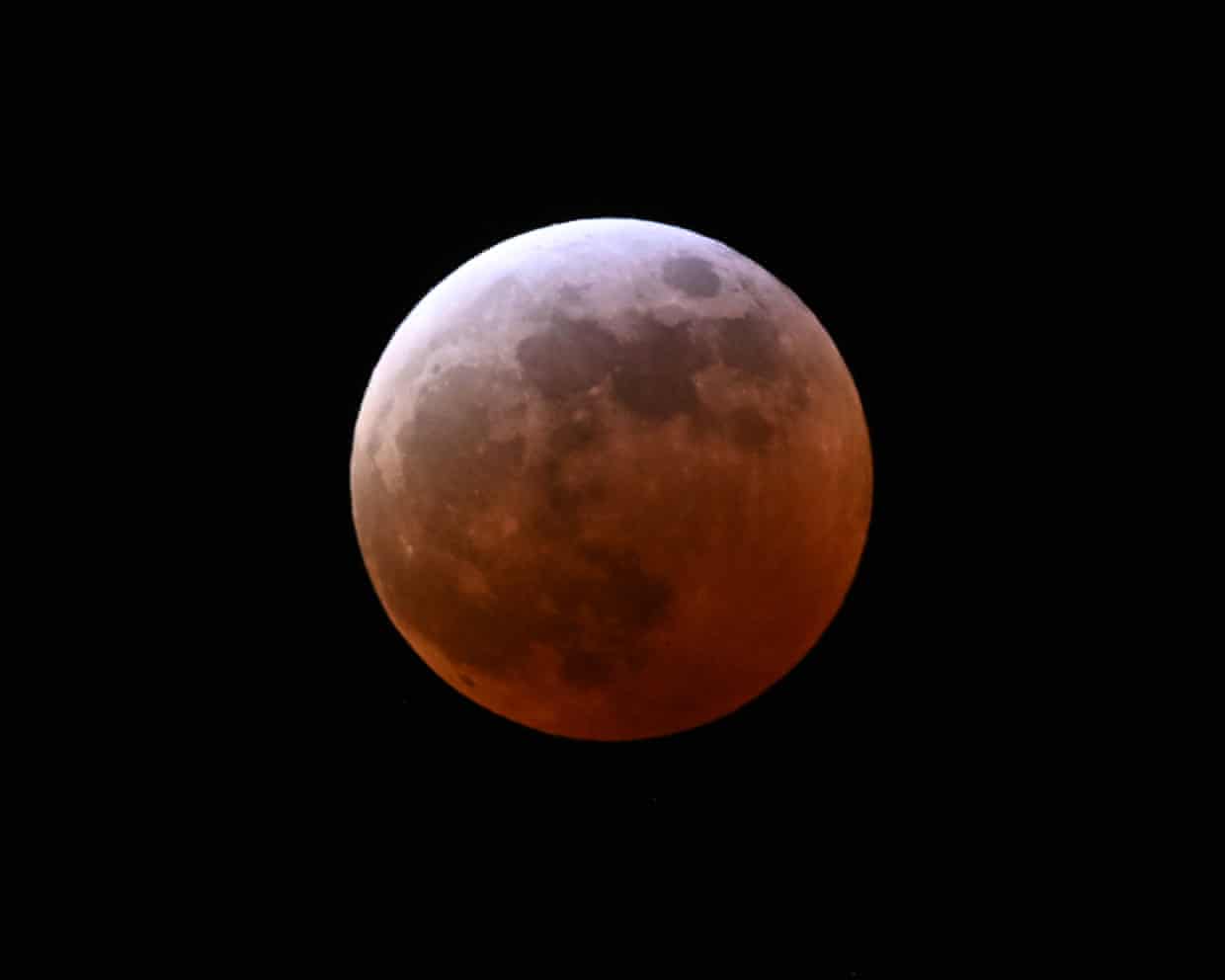Science
Australia Set to Witness Rare Total Lunar Eclipse on Monday

Australia will have a front-row seat to a rare total lunar eclipse on March 14, 2024. Known as a “blood moon,” this phenomenon occurs when the Earth aligns directly between the sun and the moon, casting its shadow across the lunar surface. During this event, the moon takes on a striking deep red hue, creating a captivating visual experience.
The eclipse will begin at approximately 2:27 a.m. AEST, when the moon starts to enter Earth’s shadow. By 3:30 a.m., it will be fully immersed, glowing a rich crimson during the totality phase, which lasts until 4:42 a.m. The entire eclipse will conclude by 5:56 a.m., offering over 70 minutes of this extraordinary spectacle.
Viewing Conditions Across Australia
Different regions in Australia will experience varying views of the eclipse. According to Laura Driessen, an astronomer at the University of Sydney, West Australians will have particularly impressive views, as the moon will be high in the sky. In contrast, those in the eastern states will see the moon lower on the western horizon, potentially giving it an enlarged appearance.
For viewers in Perth, the eclipse will commence at 12:27 a.m. local time and will end around 2:57 a.m. Driessen emphasizes the significance of this event, noting, “We get lunar eclipses once every couple of years, but they don’t always align for Australia. This one is really special because the whole country gets to see the best parts.”
No special equipment is required to observe the blood moon. Clear skies are all that is needed for a good view, making it accessible to everyone across the country.
The Science Behind the Blood Moon
Dr. Tanya Hill, senior curator of astronomy at Museums Victoria, describes the eclipse as a breathtaking process. “From Earth, we’ll see the shadow slowly move across the face of the moon until it is fully engulfed and turns a deep red,” she explains. This particular eclipse is favorable for Australia, as the country finds itself perfectly positioned on the night side of Earth during the event.
While another total lunar eclipse is expected next year, Driessen believes that Australians will not witness another as spectacular as this one until 2028. “This one is definitely worth waking up for,” she adds.
Other regions that will also have good visibility of the eclipse include China, India, the Philippines, and parts of Africa. Most of North and South America will miss this event entirely, as they will be on the sunlit side of the planet during the eclipse.
Throughout history, blood moons have inspired awe and sparked various interpretations across different cultures. Ancient civilizations, from the Norse to the Native Americans, viewed the red moon as a harbinger of divine anger or supernatural conflict. Even biblical texts referenced such events, warning that “the sun will be turned into darkness and the moon into blood before the day of the Lord comes, that great and terrible day.”
Although modern science has demystified the phenomenon, the visual spectacle promises to be just as powerful and poetic. For more information about the science behind blood moons, visit https://www.timeanddate.com/eclipse/lunar/2025-september-7.
-

 Science3 months ago
Science3 months agoToyoake City Proposes Daily Two-Hour Smartphone Use Limit
-

 Top Stories3 months ago
Top Stories3 months agoPedestrian Fatally Injured in Esquimalt Collision on August 14
-

 Health3 months ago
Health3 months agoB.C. Review Reveals Urgent Need for Rare-Disease Drug Reforms
-

 Technology3 months ago
Technology3 months agoDark Adventure Game “Bye Sweet Carole” Set for October Release
-

 World3 months ago
World3 months agoJimmy Lai’s Defense Challenges Charges Under National Security Law
-

 Lifestyle3 months ago
Lifestyle3 months agoVictoria’s Pop-Up Shop Shines Light on B.C.’s Wolf Cull
-

 Technology3 months ago
Technology3 months agoKonami Revives Iconic Metal Gear Solid Delta Ahead of Release
-

 Technology3 months ago
Technology3 months agoApple Expands Self-Service Repair Program to Canada
-

 Technology3 months ago
Technology3 months agoSnapmaker U1 Color 3D Printer Redefines Speed and Sustainability
-

 Technology3 months ago
Technology3 months agoAION Folding Knife: Redefining EDC Design with Premium Materials
-

 Business3 months ago
Business3 months agoGordon Murray Automotive Unveils S1 LM and Le Mans GTR at Monterey
-

 Technology3 months ago
Technology3 months agoSolve Today’s Wordle Challenge: Hints and Answer for August 19









